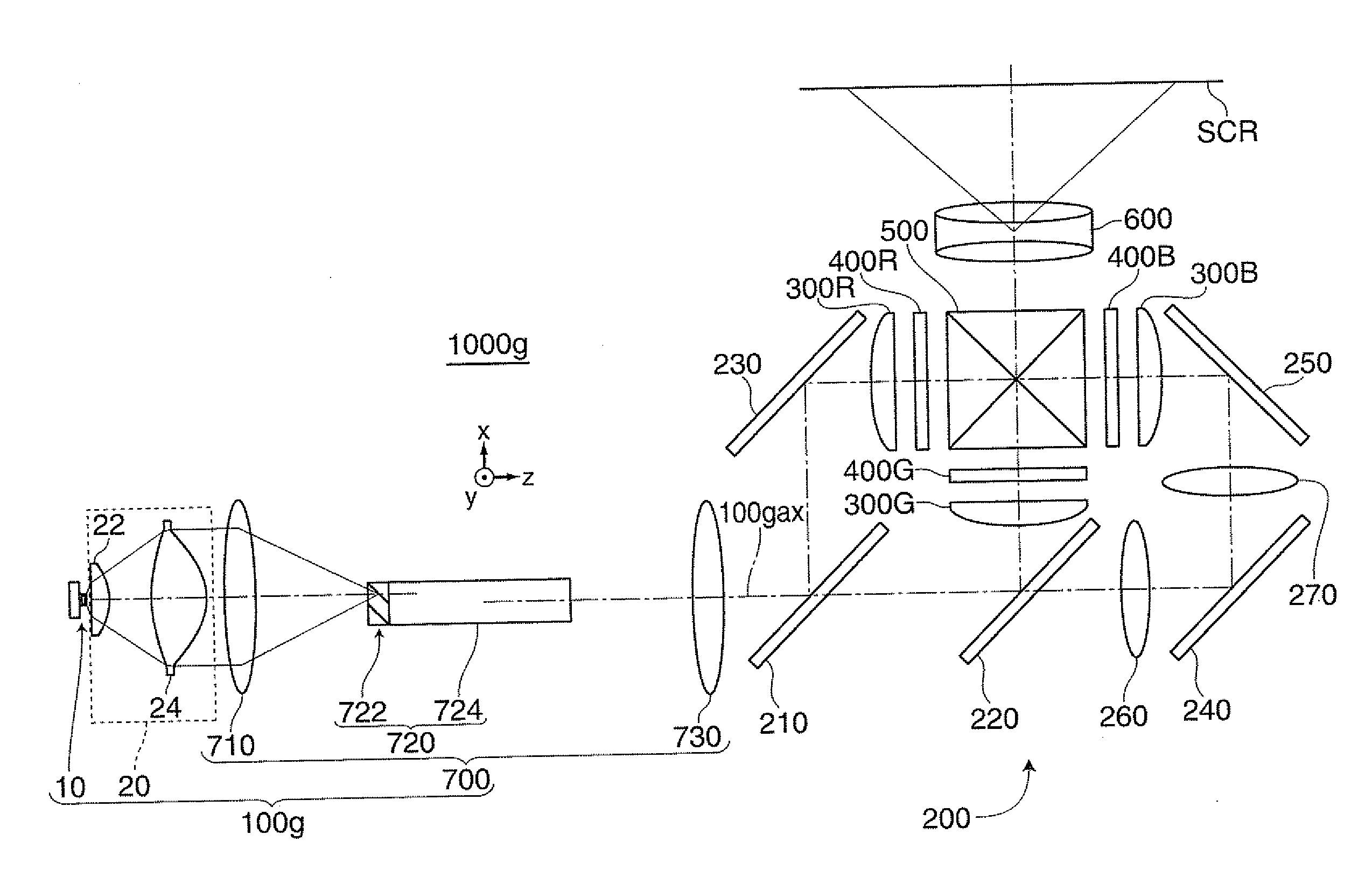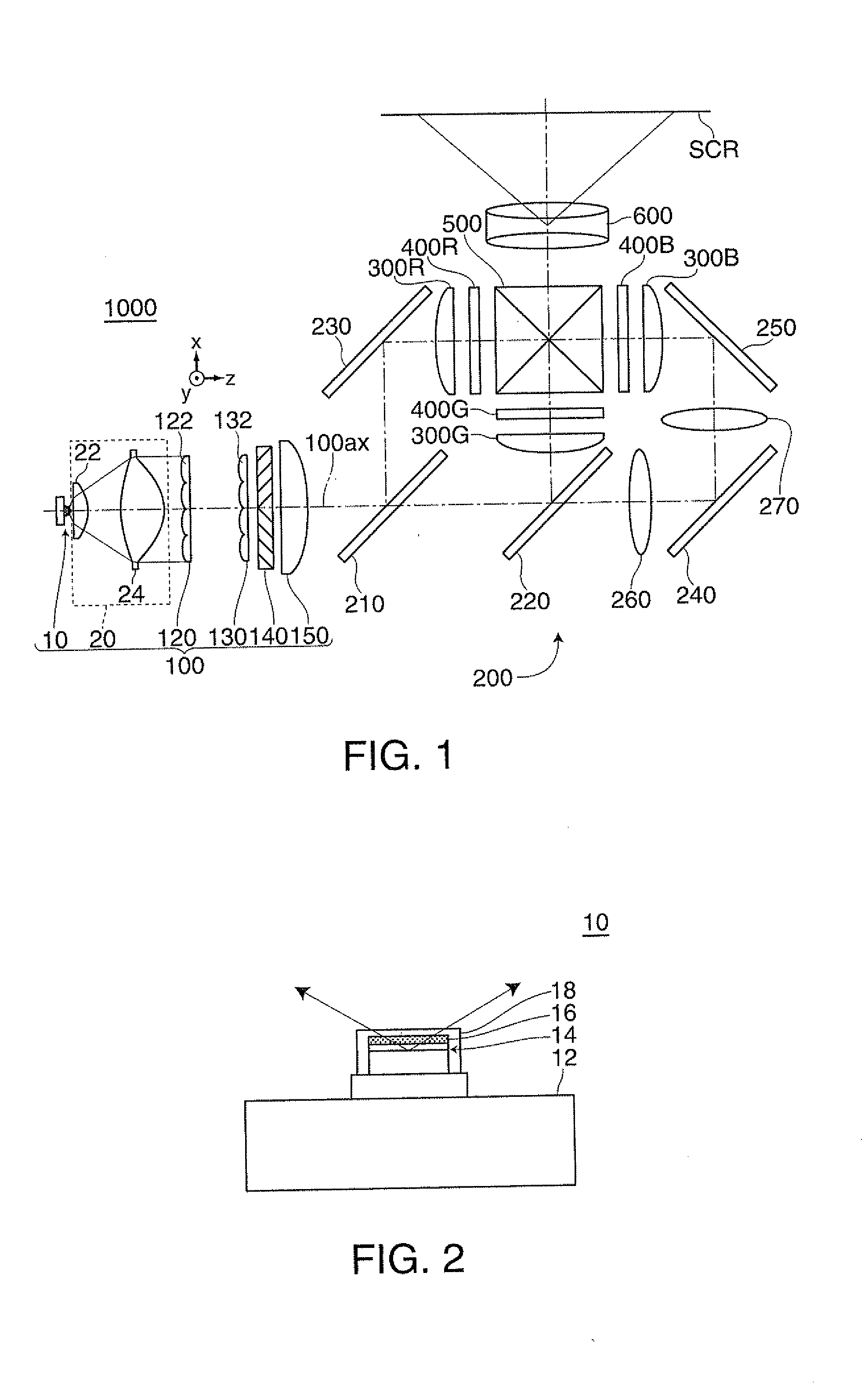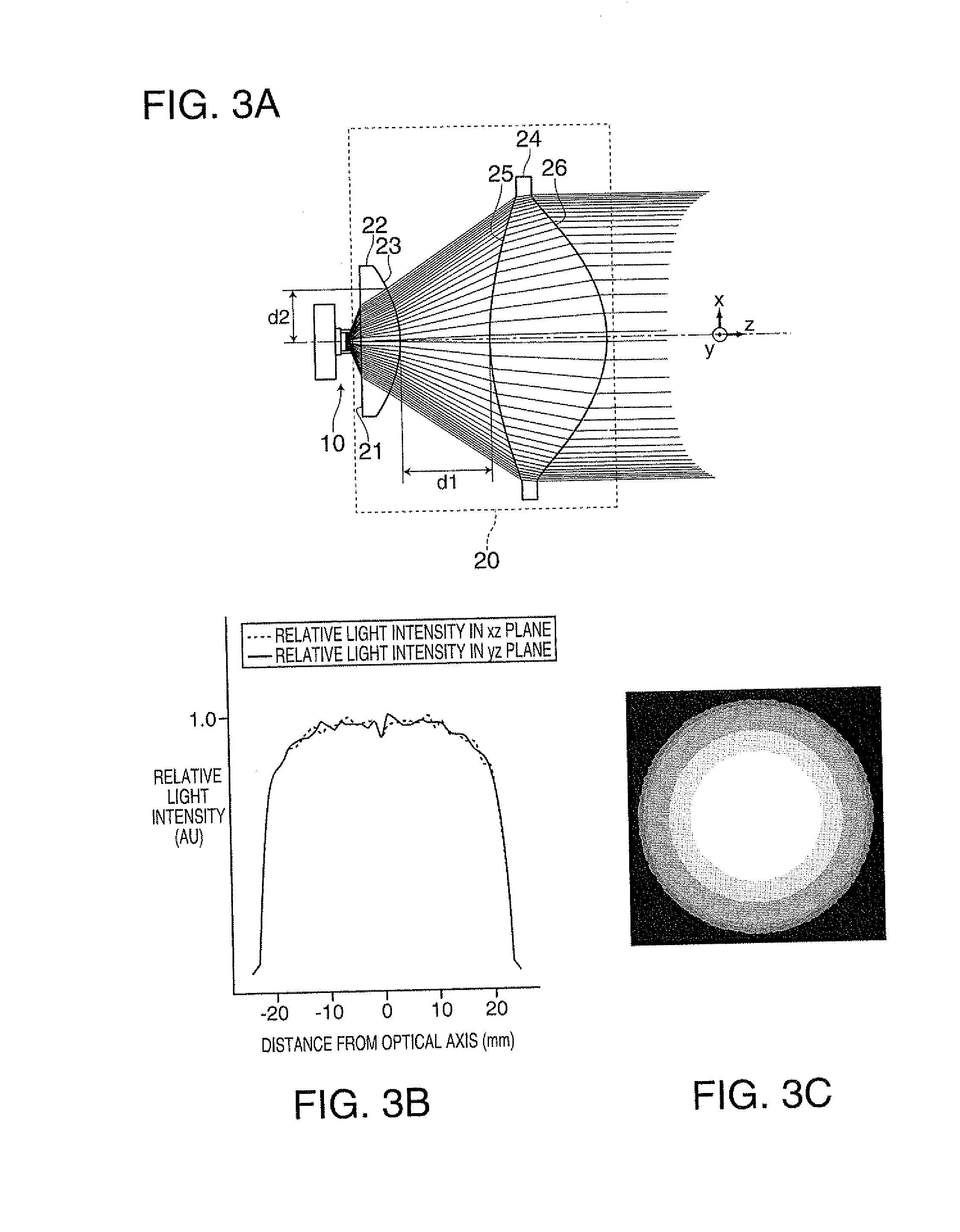Collimator lens unit, illuminating device, and projector
a technology of illumination device and lens, which is applied in the field of illumination device and projector, can solve the problems of achieve the effect of high light use efficiency and not reducing light use efficiency
- Summary
- Abstract
- Description
- Claims
- Application Information
AI Technical Summary
Benefits of technology
Problems solved by technology
Method used
Image
Examples
first embodiment
[0072]First, the configurations of a collimator lens unit 20, an illuminating device 100, and a projector 1000 according to a first embodiment of the invention will be described.
[0073]FIG. 1 is a plan view illustrating an optical system of the projector 1000 according to the first embodiment of the invention. FIG. 2 is a sectional view illustrating a solid-state light source unit 10 according to the first embodiment. FIGS. 3A to 3C are diagrams illustrating the collimator lens unit 20 according to the first embodiment. FIG. 3A illustrates a state where a beam of light emitted from the solid-state light source unit 10 is substantially collimated by the collimator lens unit 20, FIG. 3B is a graph illustrating a relative light intensity (relative luminous flux density) of a beam of light emitted from the collimator lens unit 20, and FIG. 3C illustrates an in-plane light intensity distribution (luminous flux density distribution) of the beam of light emitted from the collimator lens uni...
second embodiment
[0106]FIGS. 4A to 4C are diagrams illustrating the collimator lens unit 20a according to the second embodiment. FIG. 4A illustrates a state where a beam of light emitted from the solid-state light source unit 10 is substantially collimated by the collimator lens unit 20a, FIG. 4B is a graph illustrating a relative light intensity (relative luminous flux density) of a beam of light emitted from the collimator lens unit 20a, and FIG. 4C illustrates an in-plane light intensity distribution (luminous flux density distribution) of the beam of light emitted from the collimator lens unit 20a. The beam of light shown in FIG. 4A shows a state where the beam of light emitted from the solid-state light source unit 10 is substantially collimated by the collimator lens unit 20a, but does not reflect the luminous flux density. In FIG. 4B, the vertical axis represents the relative light intensity of the beam of light emitted from the collimator lens unit 20a, where the light intensity in an optica...
third embodiment
[0110]FIGS. 5A to 5C are diagrams illustrating the collimator lens unit 20b according to the third embodiment. FIG. 5A illustrates a state where a beam of light emitted from the solid-state light source unit 10 is substantially collimated by the collimator lens unit 20b, FIG. 5B is a graph illustrating a relative light intensity (relative luminous flux density) of a beam of light emitted from the collimator lens unit 20b, and FIG. 5C illustrates an in-plane light intensity distribution (luminous flux density distribution) of the beam of light emitted from the collimator lens unit 20b. The beam of light shown in FIG. 5A shows a state where the beam of light emitted from the solid-state light source unit 10 is substantially collimated by the collimator lens unit 20b, but does not reflect the luminous flux density. In FIG. 5B, the vertical axis represents the relative light intensity of the beam of light emitted from the collimator lens unit 20b, where the light intensity in an optical...
PUM
 Login to View More
Login to View More Abstract
Description
Claims
Application Information
 Login to View More
Login to View More - R&D
- Intellectual Property
- Life Sciences
- Materials
- Tech Scout
- Unparalleled Data Quality
- Higher Quality Content
- 60% Fewer Hallucinations
Browse by: Latest US Patents, China's latest patents, Technical Efficacy Thesaurus, Application Domain, Technology Topic, Popular Technical Reports.
© 2025 PatSnap. All rights reserved.Legal|Privacy policy|Modern Slavery Act Transparency Statement|Sitemap|About US| Contact US: help@patsnap.com



